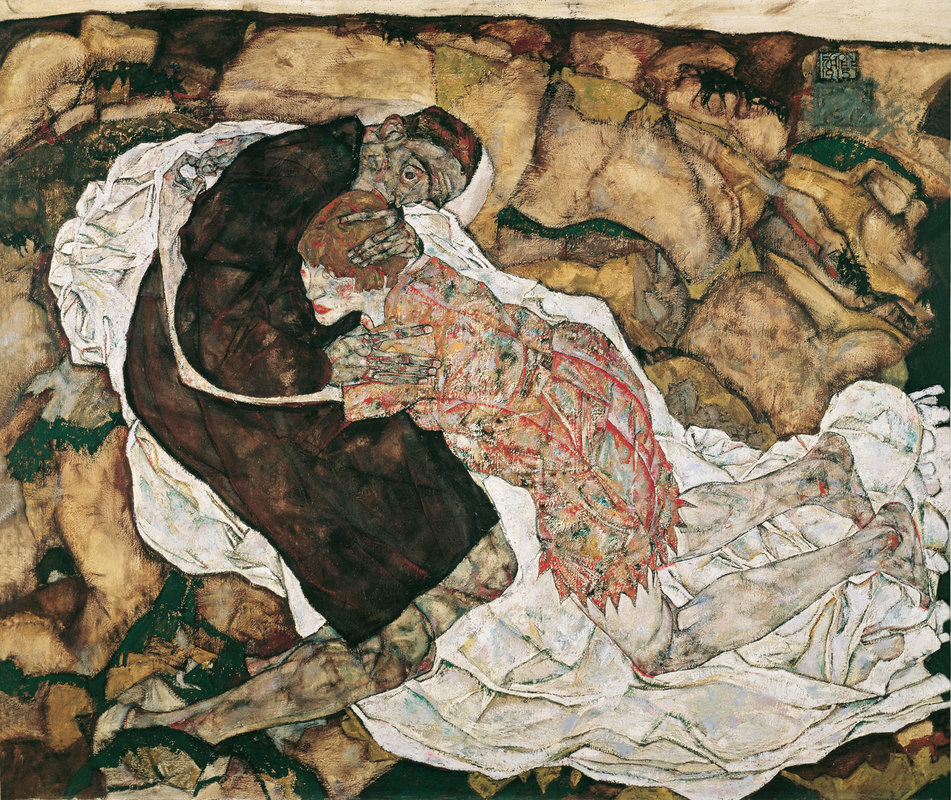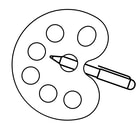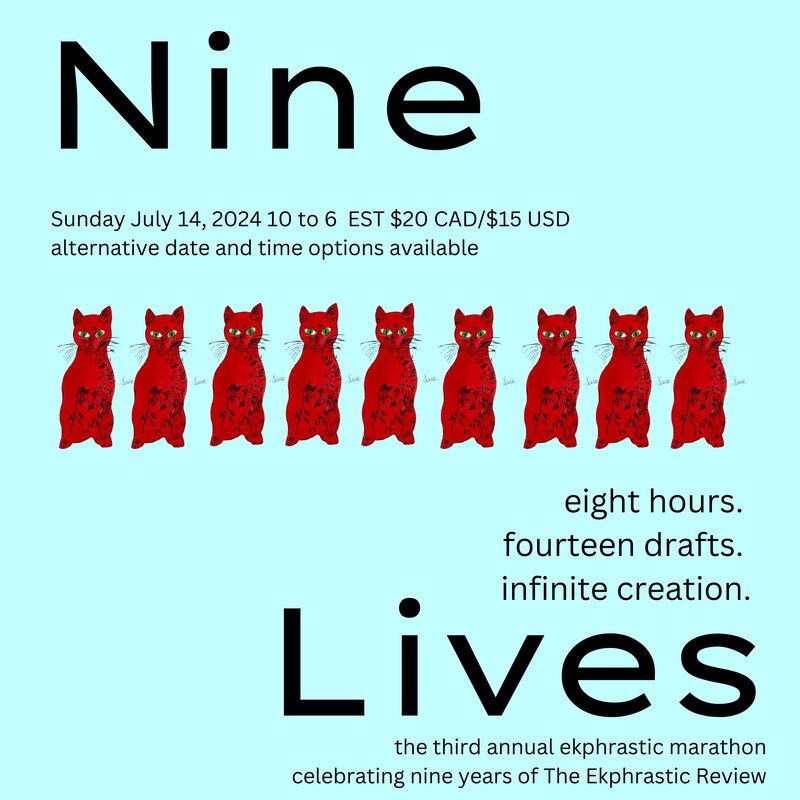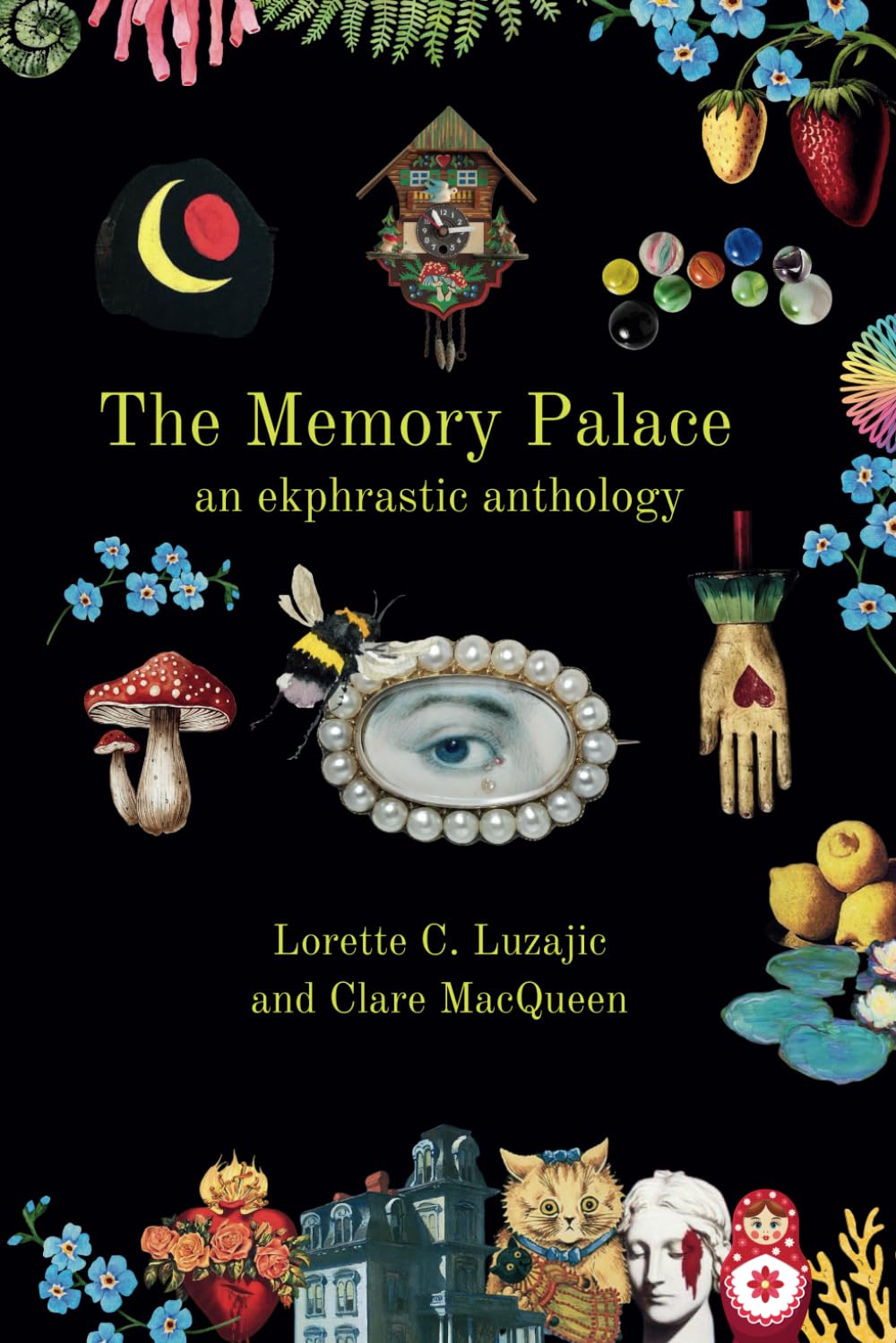|
Death and the Maiden, Egon Schiele Dürer depicted it first: The lover reclining into the beloved’s lap, and the swoon of his skin, suddenly turned sallow. She reached back and pushed her hands through his layered hair, and pulled it all lightly out of his head. Back then, Death was so quick—it was almost degrading. But not here: Where the bump of hills is body without end, and grass oozes at the edges of the knolls’ eternal affair, the rippled flow and intersecting sheets crumple unbounded by time. There, a woman, not reaching for a man’s hem, but, ring-less and inured, her teeny arms have known the slow terror of Death. How many days before her gangly grip slackens, and she returns to life? And what of Death? The craggy angle of his back is lodged in the painting like a mountain’s changeless range, and his head and legs float against a dark and igneous figure. With his hands reeled in and the kink of those long fingers, Death cleaves to his life. Andrew Hanson Andrew Hanson is an English Literature student at Westmont College in Santa Barbara, California. His work has appeared three times in his college literary magazine. He was born and raised in Miami, Florida and grew up careening around the Caribbean—catching fish and spearfishing. As of late, he has turned his attention to Medieval Literature and Philosophy, studying as a visiting student at Oxford University.
0 Comments
Your comment will be posted after it is approved.
Leave a Reply. |
The Ekphrastic Review
COOKIES/PRIVACY
This site uses cookies to deliver your best navigation experience this time and next. Continuing here means you consent to cookies. Thank you. Join us on Facebook:
July 2024
|




